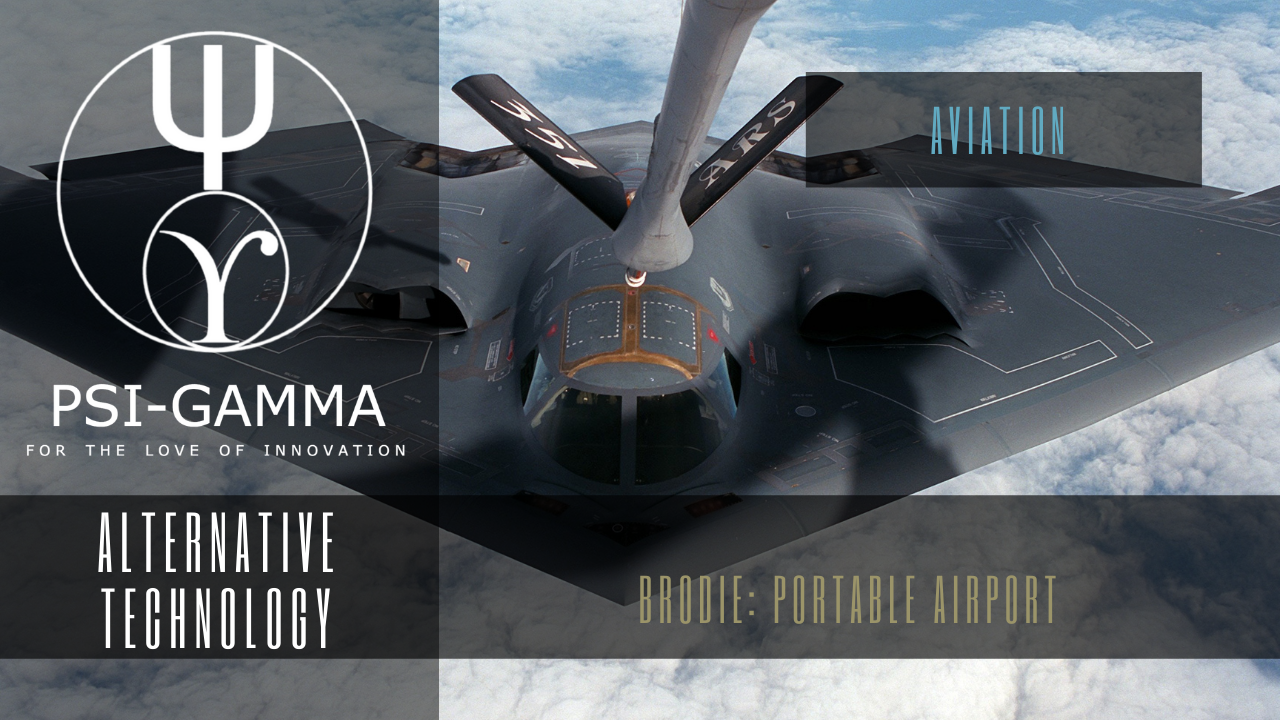
Take four masts about twice the height of telephone poles and string a few hundred feet of cable between them, and you have an airport in mid-air on which an airplane can takeoff and land without touching the ground. Here is a portable airfield that weighs only 6000 pounds; it can be packed up and carried in another airplane, dropped by parachute, and set up for business by a 6-man crew in a couple of hours. With this device and a couple of outboard booms, any ship can serve as an aircraft carrier. The cable rig can be strung across a mountain valley or stream, or installed on the top of a building. It is the most compact airport ever devised.
This remarkable skyhook was designed by Capt James H Brodie of Wright Field, formerly of the Coast Artillery and Transportation Corps, who flies but holds no AAF pilot rating.
Brodie made the first sketches of his cable rig early in March 1942, but the national Inventors’ Council and the Navy — to whom the idea was first submitted — refused to believe it. It was through the Army Transportation Corps that Brodie got his chance.
The Brodie System was first tested for the enlightenment of unbelievers at New Orleans in September 1943. This was followed by a sea trial in December, when the Brodie rig was strung between two long booms that overhung the sides of the motor ship City of Dalhart cruising in the Gulf of Mexico. Brodie was later assigned to Wright Field and provided facilities to develop further the shoestring airport.
Many postwar uses of the skyhook are contemplated, including ship-to-shore ferrying of passengers, mail, and pilots; airport-post office liaison; installations atop buildings for air commuters and department store deliveries, setups for forest rangers in mountainous country; and emergency winter operations anywhere when regular airports are snowbound.











Thank you for your sharing. I am worried that I lack creative ideas. It is your article that makes me full of hope. Thank you. But, I have a question, can you help me?